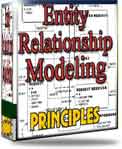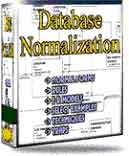 |
||
|
|
Multidimensional Project ManagementI Multidimensional project management - BackgroundThough Augustus had not had the opportunity to study in any of the B-schools that raise businessmen, he knew how to perform Multidimensional Project Management. Concurrently, he managed multiple tasks: on the one hand annexing Spain, Gaul, Dalmatia, and Egypt, while quickly extinguishing irritants such as defeating an errant brother-in-law; and on the other hand bringing stability to the Roman currency, developing a sound infrastructure such as roads, bridges, aqueducts, postal service; and also finding the time to patronize the likes of Horace and Ovid while the latter were engaged in creating some great literature. Multidimensional Project Management: Projects with multiple dimensions and sub-projects, interlocked with each other, to be achieved with a common pool of men, material and money. (Foot-soldiers are receding in Gaul? Divert men from the road-building task. Treasury dipping? Plunder another kingdom, quick!) He achieved it all, in his lifetime. Building his empire was a multidimensional project management task for him. Today, when a department or group head initiates a project, by its very nature the project is managed within the department or group itself - making it uni-dimensional. When the headquarters of a multi-national conglomerate (take any Fortune 500 company, for example) takes up a project that spans the entire organization as a whole, encompassing most or all of its units and drawing from resources from their rank and file - then the project is deemed to be multi-dimensional. In such cases, the project percolates to each unit or division in the form of a sub-project or child-project. Each unit/division head takes up the reins of the child-project in their hand, or designates some person to be responsible for it. The child-project is then broken further and distributed amongst the departments/groups that shall work on it. Internal and external resources, the latter perhaps interacting with other units of the organization concurrently, enter into the picture. The child-project interlocks with the other child-projects in order to deliver results that add to the completion and success of the main project as a whole. How does the project manager, in-charge of the overall project, sitting at the headquarters, keep in touch with what is going with the project in each of the units? So many things are going on, and simultaneously too, that are invisible to them. How do they know whether the project is slipping overall, or whether there are any bottle-necks that, if not taken care in time, might doom the project to failure? It is to handle such situations that Multidimensional Project Management as a paradigm got evolved in the late fifties.
II Details of Multidimensional Project ManagementIn order for the project manager sitting at the headquarters to know exactly what is going on, all the components at every level of the organization, and involved directly or indirectly in the implementation of the project have to have certain characteristics. They are as follows:
One feature that Multidimensional Project Management should ideally have is the ability of individual participants to see where the overall project is heading, though without the right to dip into details beyond a particular level. (That bird’s eye view to be available on every desk top, please.) This motivates all participants, and they are better able to identify and relate with the task at hand, as they realize that it is all part of an integrated whole.
III Ground realitiesWhat has been described above is a wish-list for Multidimensional Project Management. Life would have been so easy, had things gone so smooth, right? The Standish Group, a respected consulting organization in the space of project and value performance, has come out with eye-opening statistics on the success rates of projects. According to their data, the smaller the project size (the less the number of dimensions, that is), the higher the success hit. Classifying projects into three resolution types:
They have made the observation that projects with small size (below $750K and a team of six people - uni-dimensional, no doubt) had a better chance of success, than, say, a project worth > $10 million, and involving 500+ people (multidimensional, of course). In fact, the multidimensional ones have reported Zero success rate. While much soul-searching has gone into why there is so much sheer waste of men, material and resources, with zilch outcome in the end, some broad consensus is emerging that if the wish-list above is achieved, with the help of technology, no doubt - the zilch can grow to a respectable figure.
Return to Software Project Management
|
Exclusive interviews with:
Free eBookSubscribe to my newsletter and get my ebook on Entity Relationship Modeling Principles as a free gift: What visitors say...
"I just stumbled accross your site looking for some normalization theory and I have to say it is fantastic.
Read more
Testimonials
I have been in the database field for 10+ years and I have never before come across such a useful site. Thank you for taking the time to put this site together." Mike, USA |
|
Theory & Practice
DB Normalization Analysis Phase Database Keys DB Glossary Appl.Architecture Oracle DBA MySQL DBA SQL Server DBA Install Oracle Install SQL Server Proj.Management Oracle Constraint Programming Tips Database Normalization eBook: |
||
|
Copyright © www.databasedesign-resource.com /
All rights reserved. All information contained on this website is for informational purposes only. Disclaimer: www.databasedesign-resource.com does not warrant any company, product, service or any content contained herein. Return to top
The name Oracle is a trademark of Oracle Corporation. |
||